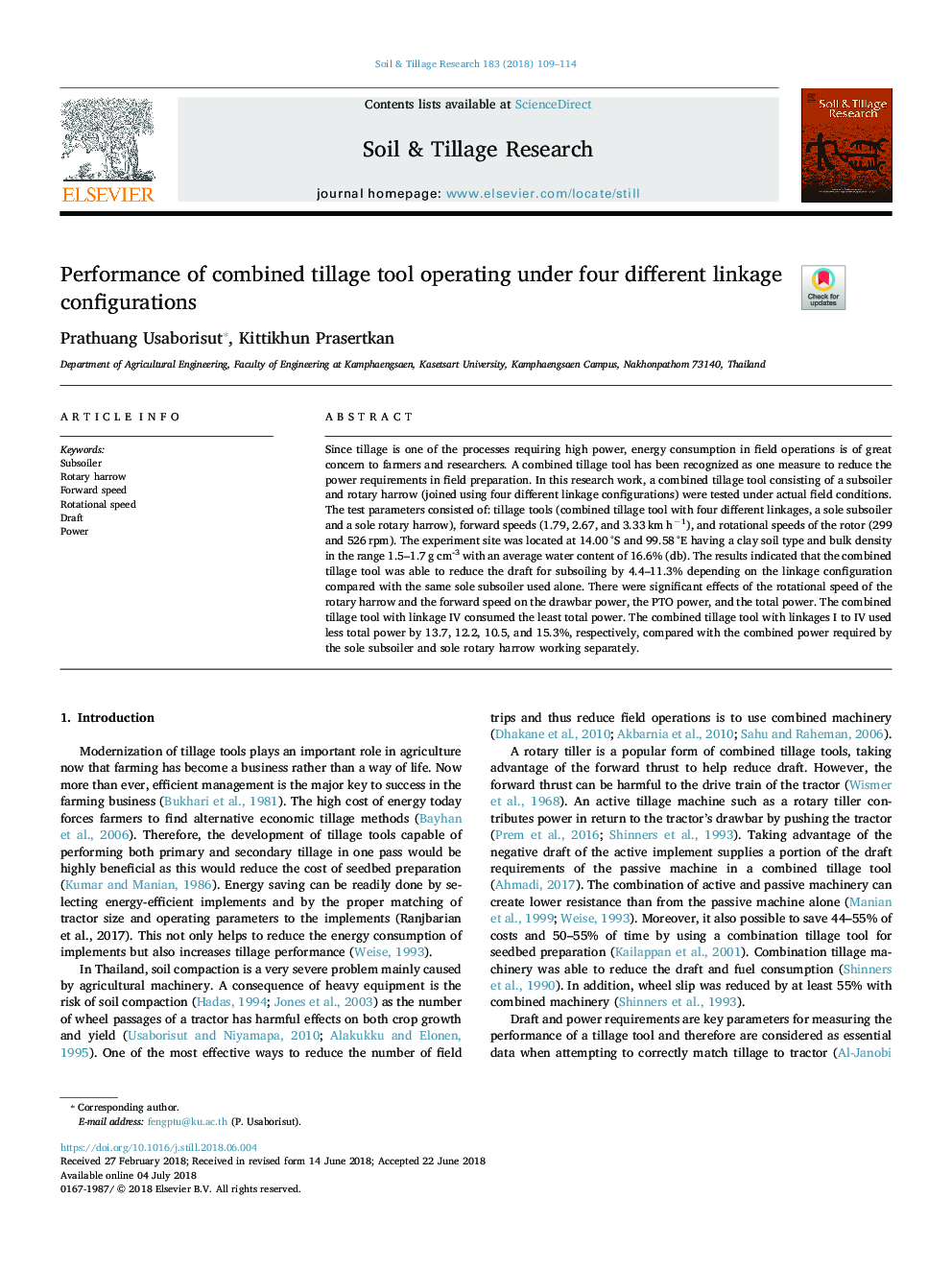| Article ID | Journal | Published Year | Pages | File Type |
|---|---|---|---|---|
| 6772944 | Soil and Tillage Research | 2018 | 6 Pages |
Abstract
Since tillage is one of the processes requiring high power, energy consumption in field operations is of great concern to farmers and researchers. A combined tillage tool has been recognized as one measure to reduce the power requirements in field preparation. In this research work, a combined tillage tool consisting of a subsoiler and rotary harrow (joined using four different linkage configurations) were tested under actual field conditions. The test parameters consisted of: tillage tools (combined tillage tool with four different linkages, a sole subsoiler and a sole rotary harrow), forward speeds (1.79, 2.67, and 3.33â¯km hâ1), and rotational speeds of the rotor (299 and 526â¯rpm). The experiment site was located at 14.00â¯Â°S and 99.58â¯Â°E having a clay soil type and bulk density in the range 1.5-1.7â¯g cm-3 with an average water content of 16.6% (db). The results indicated that the combined tillage tool was able to reduce the draft for subsoiling by 4.4-11.3% depending on the linkage configuration compared with the same sole subsoiler used alone. There were significant effects of the rotational speed of the rotary harrow and the forward speed on the drawbar power, the PTO power, and the total power. The combined tillage tool with linkage IV consumed the least total power. The combined tillage tool with linkages I to IV used less total power by 13.7, 12.2, 10.5, and 15.3%, respectively, compared with the combined power required by the sole subsoiler and sole rotary harrow working separately.
Related Topics
Physical Sciences and Engineering
Energy
Renewable Energy, Sustainability and the Environment
Authors
Prathuang Usaborisut, Kittikhun Prasertkan,
